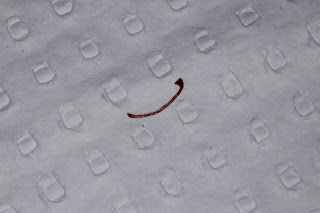A quick tip for prior to impressions
Ensure the teeth are relatively clean of food and plaque prior to impressions. I can't count the number of times I have taken an impression and bits of interproximal food come out with the impression. Usually in perio patients and usually in posterior teeth. Really heavy plaque will affect your surface detail capture and food will affect your accuracy and look gross for the lab an on the model. It will also affect your impression disinfection. If there is really heavy plaque, give the teeth a good prophy or teach the patient how to use a toothbrush and reschedule. If the patient has recently eaten, give their mouth a good rinse and floss. When I haven't done this and there is food that comes out with the first impression, usually the second impression goes well.

